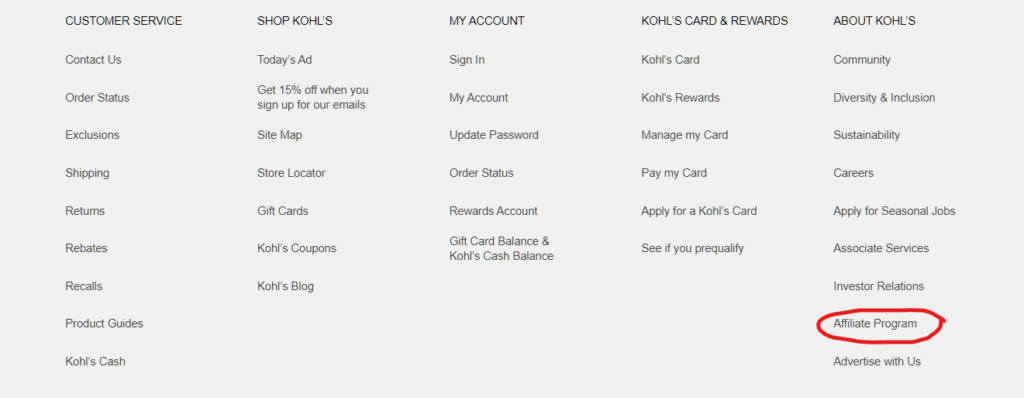Never Stop Learning Affiliate Marketing
Affiliate marketing has emerged as a powerful online marketing strategy, enabling businesses to expand their reach, drive sales, and foster mutually beneficial partnerships with affiliates. One of the main advantages of affiliate marketing for a business is that it helps establish its name and raise awareness in the market forum. The mere term is a little intimidating, but it’s a very easy-to-understand basic concept. The methods, however, evolve almost daily. This article will address website blogging as a platform for affiliate marketing.
A blog (weblog) is a website where you journal about subjects you love, places you go, know, teach, etc. Content is new or frequently updated information you write about on your blog. The subject you feature or choose to write about on your website is called a niche (neesh). Examples might include a travel niche, cooking, automotive, science, or hunting – there is an unending buffet of niches to choose.

Affiliate marketing involves using space on your blog posts to advertise for businesses (affiliate partners) and they pay you a commission on any sales created from that ad. This is called monetizing your website and it can be very lucrative if done correctly.
Products we independently select, and share may have an attached link to a merchant — we may receive a small commission if you choose to click on the link and buy, which does not affect the initial price. Trend Wealthy is a participant in the Amazon Services LLC Associates Program, an affiliate advertising program designed to provide a means for sites to earn advertising fees by advertising and linking to Amazon.com
Introducing the Concept
Advertising is expensive for businesses, so with the advent of the internet, a way has been formulated for businesses to get advertising for a fraction of the cost of traditional ad expenses like radio, newspaper, magazines, billboards, etc.
Simply put, businesses offer an “affiliate program” wherein you join the program and advertise for them on your blog or through social media. Anyone can apply. It’s free. The affiliate’s rules and regulations are clearly defined and you may or may not need a website, though most companies want to see a website and review its content prior to approval.
In affiliate marketing, if you are in it for a year or more, you will end up having numerous websites with different niches. You can affiliate market on all of your website’s posts. If you can keep up with updating and adding new content, refreshing affiliate links, and refreshing old content on multiple sites, you will succeed. There are ways to do it. Follow Trend Wealty for lots of helpful information.
Affiliate Program Application
To find a business’s affiliate program application link, scroll to the bottom of any business page and look for the word affiliate or partner. Here is an example from a department store website:

Simply click the Affiliate Program link and just follow the prompts. You will be notified through the email you provide in a matter of minutes to days – it just depends on the company.
Once you get that email it will have instructions on obtaining your personal affiliate link. This is a unique link directly assigned to you that you will use to link the product you’re advertising for that business, back to them. This allows their system to recognize you as the affiliate getting the commission for the sale through your website ad.
You can sign up for as many affiliate programs as you wish. Some affiliates will drop you after a certain time if you don’t make any sales. Don’t let that dishearten you because there are many factors that determine sales from your sites. You can usually apply again after a few months and by then you will have added more content to your website and accumulated more traffic.
Why Content Is So Important
Earlier, we explained content as the writing of information on a subject you choose that you publish on your blog. Each of your posts should be made up of quality content that is informative or helpful to the reader.
The reason it is so important to create quality, unique content is that you want your article to appear at the top of the list in a search in search engines. Being number one brings people to your website.
Each search engine on the internet conducts what is called a crawl. This means that they have the ability to “read” every page on the internet and rank them in search results from best to worst based on an intricate algorithm (a formula or set of rules given to the crawling computer to reach a given conclusion). Crawling is consistent but isn’t conducted on any one site continually.
Another reason content is important is that you want to serve information that will draw people to your blogs and keep people visiting your site repeatedly. This visitation rate is called traffic. Traffic bears all the weight of the success of your ad campaigns. If you don’t have traffic to your website, you won’t have clicks on your ads. Those clicks are essential to your site analytics and imperative to the mission of getting commissions.
When you put an ad on your website, you are going to attach your affiliate link to the word or graphics you use to display the ad. This link is the one you received from the affiliate partner you are advertising for.
When someone visits your site, that visit is recorded by search engines. It serves as a basis of information for your affiliates. They want to know if and how often you get clicks on your page. This helps them determine your website’s effectiveness in relation to their product’s representation. Some affiliates will raise commissions on sites that perform well.
Click Analysis: Not All Clicks Are The Same
There are several different reactions to the click in affiliate marketing. It is to your benefit to understand what each one entails because each affiliate you partner with, has differing stipulations.
- Pay-per-Sale (PPS) or Cost-per-Sale (CPS): This type of click is the most common type. When a visitor to your site clicks on one of the ads on your site that has your affiliate link, they are redirected to the product buying page. If they buy the product, you get a commission. If they don’t buy, a cookie with your link is activated and if the clicker comes back within a given period of time, you still get a commission. Most importantly, many affiliates give you a commission on any sale made on their site (during a given time frame), even if it’s not the product or service you had an ad for.
- Pay-per-Click (PPC): When a visitor clicks on an ad with your unique affiliate link, they are redirected to the advertiser’s website. In this case, you earn a commission which is based on the number of clicks received. This type is mostly used by websites or blogs that focus on generating high traffic and engagement. Sometimes this is labeled “clickbait”.
- Pay-per-Lead (PPL): This is where affiliates earn a commission when a referred visitor takes a specific action. This could be something like signing up for a newsletter, filling out a form, or completing a survey. The commission here is based on generating qualified leads for the advertiser. This click type is commonly used in industries like finance, insurance, and education.
- Cost Per Action (CPA). This is a model where you have a blog or app. Businesses partner with you as an affiliate, to place ads on your blog or in your app. If that ad, results in a sale/subscription/membership, you get a commission based on whatever the contract between you and the business states.
These are the main types of click actions used in affiliate marketing. You can have multiple click types and affiliate partners on your blog. You can have all of your websites listed with several affiliate partners. It’s recommended you start slow with one or two and go from there.
Affiliate Marketing Classified
Affiliate Marketing is broken down into three main classifications which define the type of interaction between you, the affiliate partner, and the product.
- Unattached Affiliate Marketing: This approach represents a detached form of affiliate marketing, as the affiliates are not obligated to recommend or provide advice due to their lack of attachment to both the potential customer and the product. Affiliates promote products or services without having any personal connection or affiliation with the products they are promoting. Considered a low-effort strategy to earn passive income, it means that you won’t build a credible following or community around a product or service.
- Related Affiliate Marketing: Related affiliate marketing involves the promotion of products or services by an affiliate with some type of relationship to the product. You, the affiliate, have a niche and the product or service you are advertising is related to that niche. Your content is an indicator of your level of authority and knowledge of the product making you a trusted source, even though you make no claims about the use of the product or service.
- Involved Affiliate Marketing: This type of marketing establishes a deeper connection between the affiliate and the product or service being promoted because they have first-hand knowledge of the product/service, are confident in its quality, and want to share it with an audience. They thereby become an expert and trusted source of information. This type of marketing can be lucrative, but because the product/service is being recommended based on personal experience, their reputation may be compromised by any problems arising from the offering.
Affiliate Marketing Systems To Explore
The beauty of affiliate marketing is that you can choose to use one or all of the systems on your blogs, and you most probably will. If you join Amazon Associates, you can still have Google Ads on your site(s).
The most recommended starter affiliate partner is Amazon Associates. It’s free and it gives you access to every product on Amazon, Kindle Direct Publishing, and more for affiliate marketing. The possibilities are endless! It is simple to use and understand. Amazon Associates is classified as related affiliate marketing.
Google Adsense is also an excellent source for affiliate marketing. You will need a website for Adsense as Google automatically places random ads on your website. You don’t have to create graphics or set links – Google does it all. When a visitor to your site clicks on one of these ads, you get a commission. The ads are usually pertinent to the content on your page. This is an example of unattached affiliate marketing.
Merchants who sell supplements, creams, lotions, etc., pay a lot of commission for marketing them. The reasoning behind that is the copy you write in the ad, must convince the audience that you know for a fact the product delivers in its claims. This is classified as involved affiliate marketing.
There are affiliate marketing platforms that gather numerous merchants into their program for ease of access. There are many, many of these platforms and most, if not all of them are free to join. When you become an affiliate of their platform, you gain access to a large number of merchants in many categories. A website is usually required for them, but there are a few for who you need only make landing pages for.
The most popular are:
- Clickbank
- CJ
- Sovrn
- AdCombo
- Shareasale
- Rakuten
- JVZoo
- Skillshare
- Peerfly
- Maxweb
- Neverblue
Affiliate Marketing is not a get-rich-quick avenue no matter what you might read. It takes a lot of time to gather the knowledge necessary to get up and running. Implementation of all the components is time-consuming. It is, however, low-cost to startup, satisfactory in the process, and lucrative by design.
There are many online courses to benefit from and one I highly recommend is Wealthy Affiliate. This program provides courses organized to start the process from the beginning step by step, get a website up within a week, and keep you growing for as long as you wish. It’s free to review here.
Don’t let anyone tell you that the internet is saturated with affiliate marketers. It isn’t true. There is plenty of room at the top. I’m going to be there. Are you?
All the best!









